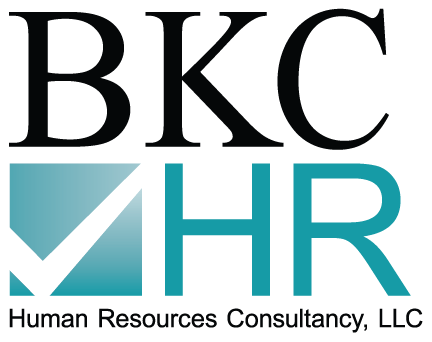The Treasury Department and Internal Revenue Service released much-requested guidance, simplifying the procedures for small taxpayers to comply with the final tangible property regulations (T.D. 9636) and disposition regulations (T.D. 9689). The new procedures allow small businesses to change a method of accounting under the final tangible property and disposition regulations on a prospective basis for the first taxable year beginning on or after January 1, 2014. However, no audit protection is provided for taxable years beginning before January 1, 2014.
The Service is also waiving the requirement to complete and file a Form 3115 for small business taxpayers that choose to use this simplified procedure for 2014. In addition, no formal election is required to be filed with the tax return to request a change in accounting method under this guidance.
Rev. Proc. 2015-20 is effective for taxable years beginning on or after January 1, 2014.
Simplification for Small Business Taxpayers
Rev. Proc. 2015-20 modifies Rev. Proc. 2015-14 to permit a “small business taxpayer” to make certain tangible property changes in its method of accounting and disposition changes in its method of accounting with an adjustment under section 481(a) that takes into account only amounts paid or incurred, and dispositions, in taxable years beginning on or after January 1, 2014. By choosing this simplified section 481(a) adjustment procedure, small business taxpayers are able to make these changes in their method of accounting for the 2014 taxable year with a zero section 481(a) adjustment, which effectively amounts to a cut-off basis.[1] The simplified section 481(a) adjustment option is available only to changes under the final tangible regulations (section 10.11(3)(a) of Rev. Proc. 2015-14), certain permissible methods of accounting for depreciation of MACRS property in mass accounts (section 6.37(3)(a)(iv), (a)(v), (a)(vii), and (a)(viii) of Rev. Proc. 2015-14), disposition of a building or structural component (section 6.38 of Rev. Proc. 2015-14), and disposition of tangible depreciable assets (section 6.39 of Rev. Proc. 2015-14).
The revenue procedure applies to a taxpayer with one or more separate and distinct trade(s) or business(es) that has:
- Total assets of less than $10 million as of the first day of the taxable year; or
- Average annual gross receipts of $10 million or less for the prior three taxable years, as determined under Treas. Reg. § 1.263(a)-3(h)(3) (substituting “separate and distinct trade or business” for “taxpayer”).
Rev. Proc. 2015-20 applies the “total asset” test to each taxpayer, which may include multiple trades or businesses. In contrast, the “gross receipts” test is applied to each separate and distinct trade or business of the taxpayer. Therefore, Rev. Proc. 2015-20 applies to a taxpayer that meets the “total asset” test (even if the gross receipts test is not met) as well as to a separate and distinct trade or business if that trade or business meets the “gross receipts” test (even if the total assets test is not met).[2] Rev. Proc. 2015-20 does not require aggregation of taxpayers or trades or businesses under the attribution rules under section 267(b) for purposes of either test.
Rev. Proc. 2015-20 does not define a separate and distinct trade or business. Whether trades or businesses are separate and distinct requires a factual determination. Treas. Reg. § 1.446-1(d) provides that a separate trade or business must keep a complete and separable set of books and records. Courts have also considered the following additional factors regarding whether a taxpayer is engaged in separate trades or businesses: (1) whether common management exists; (2) whether the taxpayer holds out each line as a separate business; (3) whether separate bank accounts are used; (4) whether the businesses share employees; and (5) the nature of each business. If, by reason of maintaining different methods of accounting, there is a creation or shifting of profits or losses between the trades or businesses of the taxpayer (for example, through inventory adjustments, sales, purchases, or expenses) so that income of the taxpayer is not clearly reflected, the trades or businesses of the taxpayer will not be considered to be separate and distinct.
Furthermore, Rev. Proc. 2015-20 provides that a small business taxpayer choosing the simplified option for a tangible property method change under section 10.11(3)(a) of Rev. Proc. 2015-14 must also calculate the section 481(a) adjustment that takes into account only dispositions in taxable years beginning on or after January 1, 2014, for any method change made under sections 6.37, 6.38, or 6.39 of Rev. Proc. 2015-14, and vice versa. For example, a small business taxpayer that chooses to make a repair method change (automatic change #184) with a simplified section 481(a) adjustment may only make a disposition of a building method change (automatic change #205) using a simplified section 481(a) adjustment.
Waiver of Requirement to File Form 3115 for 2014 Taxable Year Only
In addition to the simplified section 481(a) adjustment procedure, Rev. Proc. 2015-20 provides further simplification with respect to the requirement to file a Form 3115, Application for Change in Accounting Method, for the method changes specifically enumerated above. While some small business taxpayers may continue to choose to file a Form 3115 in order to retain a clear record of a change in method of accounting or to make permissible concurrent automatic changes on the same form, the Service recognizes that other small business taxpayers may prefer the administrative convenience of being able to comply with the final tangible property and disposition regulations in their first taxable year that begins on or after January 1, 2014, solely through the filing of a federal tax return. Accordingly, small business taxpayers that choose to prospectively apply the tangible property regulations to amounts paid or incurred, and dispositions, in taxable years beginning on or after January 1, 2014, have the option of making the tangible property and disposition changes in method of accounting on the federal tax return without including a separate Form 3115 or separate statement for the 2014 taxable year of change only.
Use of Relief Provisions Renders Audit Protection and Late Partial Disposition Election Unavailable
Under Rev. Proc. 2015-20, a small business taxpayer choosing to calculate a section 481(a) adjustment that takes into account only amounts paid or incurred, and dispositions, in taxable years beginning on or after January 1, 2014, does not receive audit protection for amounts paid or incurred in taxable years beginning prior to January 1, 2014.
Because taxable years beginning before January 1, 2014, are not taken into account by a small business taxpayer choosing the simplified option, audit protection applies only to amounts that are paid or incurred, and dispositions, in taxable years beginning on or after January 1, 2014.
Furthermore, a small taxpayer that chooses the simplified section 481(a) adjustment option of Rev. Proc. 2015-20 to take into account only dispositions in 2014 and succeeding taxable years is not permitted to make a late partial disposition election accounting method change under Rev. Proc. 2015-14, section 6.33. The Service’s rationale is that the late partial disposition election would permit partial dispositions for taxable years beginning before January 1, 2014, and such an election would therefore be inconsistent with the prospective nature of the simplified section 481(a) adjustment option.
Transition Rule for Tax Returns Already Filed
A taxpayer that wants to use Rev. Proc. 2015-20 for its first taxable year beginning on or after January 1, 2014, but had previously filed its federal tax return for that taxable year with a Form 3115 to change to a method of accounting specified in Rev. Proc. 2015-20, may withdraw its Form 3115 by filing an amended federal tax return. The amended federal tax return must be filed on or before the due date of the taxpayer’s federal tax return for its first taxable year beginning on or after January 1, 2014, including extensions.
Comments Sought on De Minimis Rule
The Service requested comments by April 21, 2015, on increasing the de minimis safe harbor limit provided in Treas. Reg. § 1.263(a)-1(f)(1)(ii)(D) to an amount greater than $500 for a taxpayer without an applicable financial statement.
Next Steps
In light of this new guidance, taxpayers should determine if they qualify for these simplified filing procedures and then determine the appropriate course of action. Provided below are suggested actions for taxpayers qualifying and not qualifying for these simplified procedures, followed by suggested actions for all taxpayers:
Taxpayers Meeting the Small Taxpayer Filing Requirements of Rev. Proc. 2015-20
- Determine whether to file accounting method changes prospectively (no inclusion of a Form 3115) with a simplified section 481(a) adjustment or retroactively (Form 3115 required); and
- Consider amending 2014 federal tax returns already filed with accounting method changes described herein and file the amended return under these simplified procedures.
Taxpayers Not Meeting the Small Taxpayer Filing Requirements of Rev. Proc. 2015-20
- The guidance provided in Rev. Proc. 2015-20 will not affect actions necessary for compliance with the tangible property and disposition regulations for taxpayers that do not meet the small-taxpayer thresholds of this guidance.
- Such taxpayers should continue to assess which accounting method changes should be made and proceed to implement necessary business process changes and accounting method changes.
All taxpayers should continue to do the following:
- Continue to evaluate which elections (e.g., de minimis safe harbor, safe harbor for small taxpayers, election to follow book to capitalize repair and maintenance) should be made as they have not changed; and
- Continue to assess what current and prospective business and process changes must be made to implement and maintain any accounting method changes elected to conform with the tangible property and disposition regulations.
[1] A section 481(a) adjustment is required to be calculated as of the beginning of the taxable year of change. Therefore, a small business taxpayer making these changes in method of accounting in a taxable year of change subsequent to the 2014 taxable year may be required to calculate a section 481(a) adjustment for amounts paid or incurred, and dispositions, in taxable years beginning on or after January 1, 2014.
[2] Section 4.02 of Rev. Proc. 2015-20 contains an inapplicability provision that could possibly be interpreted to require a small business taxpayer to meet both the total assets test and the gross receipts test in order to be eligible for the relief provisions of this revenue procedure. Such an interpretation would prevent a business from utilizing these relief procedures if it meets one test but not both. However, we believe this unfavorable interpretation is incorrect because it would run counter to the purpose of this revenue procedure as stated in section 1 of Rev. Proc. 2015-20 (where a small business taxpayer is defined as a business with total assets of less than $10 million or average annual gross receipts of $10 million or less for the prior three taxable years).




